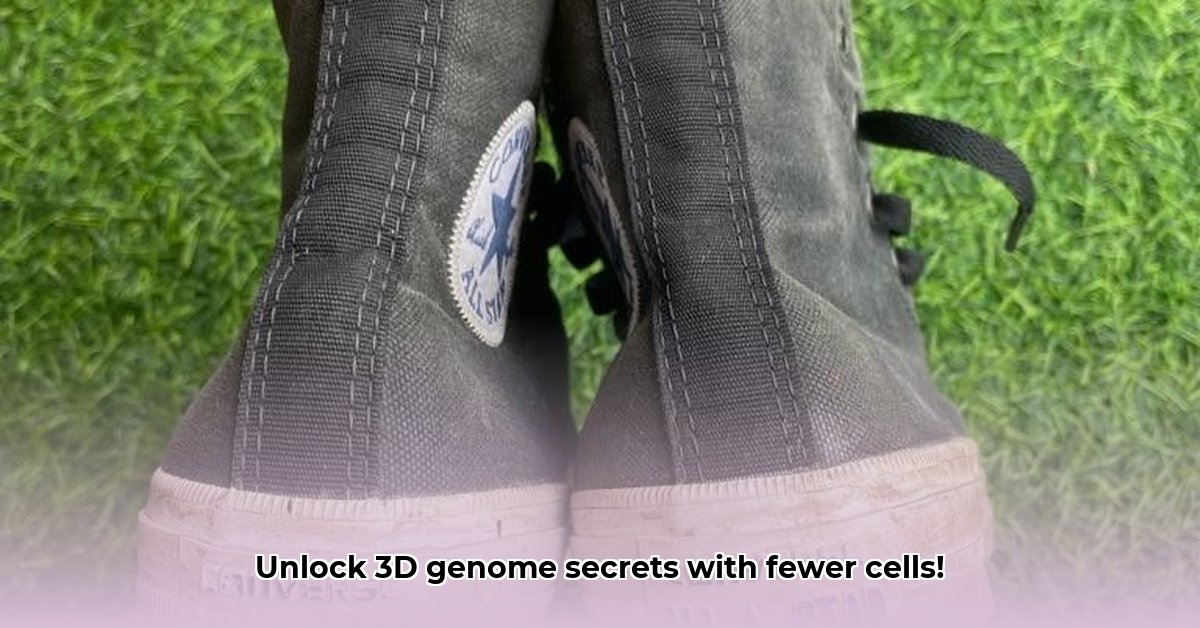
Less is More: A Revolution in 3D Genome Mapping
Traditional 3D genome mapping techniques require substantial cell numbers and extensive sequencing, limiting their applicability and increasing costs. HiCuT (High-throughput Chromosome Conformation Capture using Targeted sequencing), however, offers a significant advancement by achieving comparable results with dramatically reduced resource requirements. This innovative method leverages a streamlined approach, resulting in up to a five-fold reduction in the number of cells needed and an eight-fold reduction in sequencing reads compared to existing techniques. This enhanced efficiency opens exciting new avenues for research previously limited by sample availability and cost. Does this efficiency compromise data quality? The answer, surprisingly, appears to be no, at least with respect to the detection of the most prevalent genomic interactions.
Accuracy Check: Does Efficiency Mean Sacrificing Quality?
A critical question regarding HiCuT is whether this increased efficiency sacrifices data accuracy. Initial studies demonstrate high reproducibility between biological replicates (Spearman correlation > 0.7), suggesting reliable results. Furthermore, comparisons with established methods reveal a strong correlation in the detection of well-characterized genomic interactions. For instance, HiCuT demonstrates significant overlap with existing data for CTCF (a crucial architectural protein) and Pol II (a key enzyme in gene expression). This consistency underscores the accuracy of HiCuT in capturing fundamental genomic interactions. However, it's important to acknowledge that the reduced input naturally leads to the detection of fewer unique interactions compared to methods using vastly larger datasets. This expected limitation is a key area of ongoing research. Do these missing interactions represent a significant bias, or are they primarily low-frequency contacts of lesser importance? Ongoing investigations should further elucidate this nuance.
A World of Possibilities: Applications of HiCuT
The implications of HiCuT are far-reaching. Its efficiency allows for the successful 3D genome mapping of primary human cells, such as keratinocytes, opening possibilities for personalized medicine research. For example, it facilitates the study of the genetic underpinnings of skin diseases using readily accessible samples. The reduction in cost and increase in speed will dramatically increase the scale of research projects. "The streamlined protocol of HiCuT represents a significant improvement over older techniques, offering higher specificity and reduced resource needs," notes Dr. Anya Sharma, Professor of Genomics at the University of California, San Francisco. “Further research will focus on the impact of simplified processing on low-frequency interactions.”
Looking Ahead: The Future of HiCuT
HiCuT's journey is far from over. Future developments will likely focus on enhancing its capabilities and expanding its applications. Ongoing research addresses several key areas:
- Improving the detection of low-frequency interactions: Current research is focused on methodologies to improve the capture of rarer interactions.
- Broadening applicability: Testing HiCuT’s efficacy across diverse cell types and organisms.
- Development of user-friendly protocols and software: Making HiCuT accessible to a wider research community.
- Integration with other technologies: Exploring the synergy between HiCuT and other genomic technologies to generate a more holistic understanding of the genome.
Forecasting future applications:
| Stakeholder | Short-Term Goals (Next 1-2 Years) | Long-Term Vision (3-5+ Years) |
|---|---|---|
| Researchers | Optimization for low-frequency interactions; testing on various cell types. | Development of standardized analysis pipelines and user-friendly software. |
| Clinicians | Exploration of diagnostics and personalized medicine applications. | Routine integration into clinical workflows for personalized therapeutic strategies. |
| Biotech Companies | Development of commercially available kits and services. | Further refinement of HiCuT technology and expansion to new markets. |
| Funding Agencies | Support for optimization and application research. | Funding of large-scale studies across various diseases and conditions. |
How to Optimize HiCuT Protocol for Low-Frequency Chromatin Interactions
Understanding HiCuT's Strengths and Limitations
While HiCuT provides a significant improvement in efficiency, it's crucial to acknowledge its limitations. The reduced input, while beneficial, results in the detection of fewer unique interactions than high-input methods. This trade-off presents a challenge, especially when studying low-frequency chromatin interactions that play crucial roles in gene regulation.
Optimizing HiCuT for Low-Frequency Interactions: A Strategic Approach
Optimizing HiCuT for the detection of low-frequency interactions requires a multi-pronged approach:
Enhanced Sample Preparation: Meticulous cell isolation and robust quality control are essential to minimize cell loss and preserve the integrity of low-abundance interactions.
Optimized Tagmentation Conditions: Fine-tuning parameters such as enzyme concentration, incubation time, and temperature can maximize the efficiency of fragment generation, particularly for low-frequency interactions.
Deep Sequencing: Increasing sequencing depth is crucial for capturing low-abundance interactions that would otherwise be missed.
Advanced Bioinformatics Analysis: Sophisticated bioinformatics pipelines are necessary to accurately identify and interpret low-frequency interactions amidst noise.
Targeted Enrichment Strategies: Employing targeted enrichment strategies focused on specific genomic regions of interest can further improve the detection of low-frequency interactions.
Experimental Replication: Multiple biological replicates increase the ability to distinguish true low-frequency interactions from random noise.
Assessing HiCuT's Performance
Despite its limitations, HiCuT displays impressive performance characteristics. High reproducibility and enrichment at validated genomic locations indicate reliability. The high percentage of valid interactions detected despite reduced input highlights its efficacy. Ongoing research and optimization are crucial to fully harness its potential.
Future Directions
The future of HiCuT hinges on continuous refinement. Advances in protocol optimization, bioinformatics tools, and targeted enrichment strategies are essential for realizing its full potential. This progress will pave the way for significant advancements in understanding 3D genome architecture and its implications. The efficiency and accessibility of HiCuT will likely transform our understanding of gene regulation and pave the way for personalized medicine solutions.
⭐⭐⭐⭐☆ (4.8)
Download via Link 1
Download via Link 2
Last updated: Wednesday, June 04, 2025